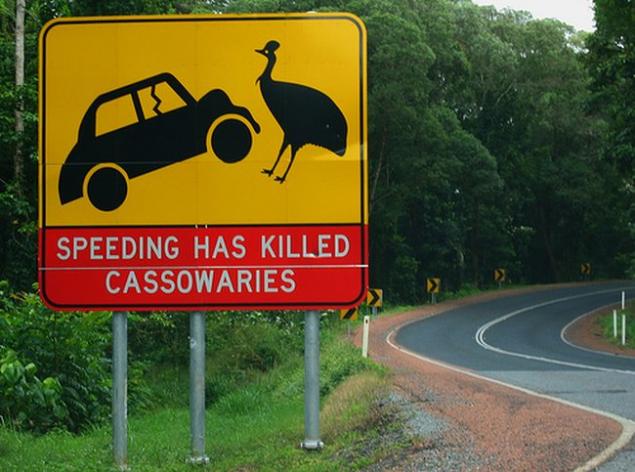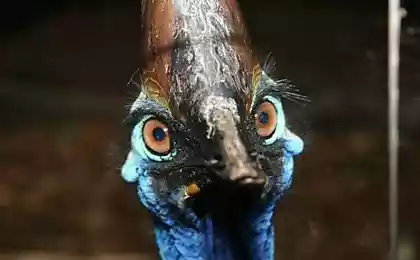1856
Cassowaries
Cassowaries - the only genus of large flightless bird of the family unit kazuaroobraznyh kazuarovyh found in the tropical forests of New Guinea and northeastern Australia. The name is borrowed from the bird Indonesian language, which has a Papuan origin, which means "horned head».


Cassowaries - large flightless bird. Adult southern cassowary reach up to 1, 5-1, 8 meters high (some individuals may reach two meters) and weigh about 60 kilograms. Therefore, cassowaries largest bird in Australia and the second largest bird in the world (after the ostrich).

All three species are growths on the head, which is called the helmet. It consists of a stratum of material around a rigid material having a spongy structure. There are multiple versions of the functions of the helmet. Perhaps it is a secondary sexual characteristics. According to another version Kazura helmet use to make its way through the undergrowth while running.

Cassowaries inhabit the tropical forests of New Guinea and northeastern Australia. The ranges of the three species are overlapping, but different kinds of cassowaries avoid meetings, preferring to settle at different heights. Since northern cassowary lives mainly in lowland forests, southern cassowary at medium altitudes, and muruk in mountain forests. In areas where there are no other species can muruk down to the height of the sea level.

Cassowaries feed mainly on fallen fruit or fruit from the lower branches of trees. Eat as fungi, snails, insects, frogs, snakes and other small animals. Like other birds cassowaries swallow stones that serve gastroliths. Cassowaries regularly drink water, which in their natural habitat is always available in sufficient quantities.












via


Cassowaries - large flightless bird. Adult southern cassowary reach up to 1, 5-1, 8 meters high (some individuals may reach two meters) and weigh about 60 kilograms. Therefore, cassowaries largest bird in Australia and the second largest bird in the world (after the ostrich).

All three species are growths on the head, which is called the helmet. It consists of a stratum of material around a rigid material having a spongy structure. There are multiple versions of the functions of the helmet. Perhaps it is a secondary sexual characteristics. According to another version Kazura helmet use to make its way through the undergrowth while running.

Cassowaries inhabit the tropical forests of New Guinea and northeastern Australia. The ranges of the three species are overlapping, but different kinds of cassowaries avoid meetings, preferring to settle at different heights. Since northern cassowary lives mainly in lowland forests, southern cassowary at medium altitudes, and muruk in mountain forests. In areas where there are no other species can muruk down to the height of the sea level.

Cassowaries feed mainly on fallen fruit or fruit from the lower branches of trees. Eat as fungi, snails, insects, frogs, snakes and other small animals. Like other birds cassowaries swallow stones that serve gastroliths. Cassowaries regularly drink water, which in their natural habitat is always available in sufficient quantities.












via




















